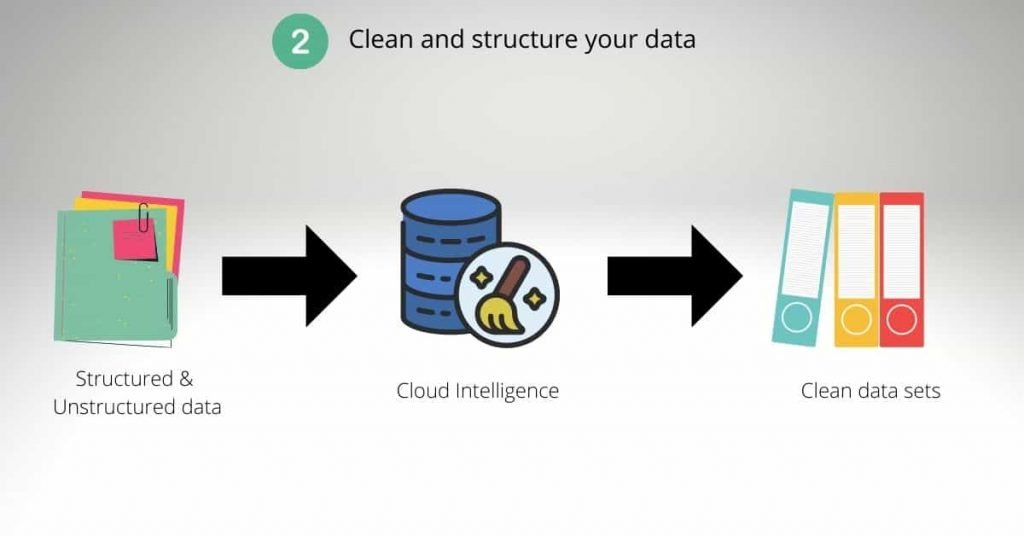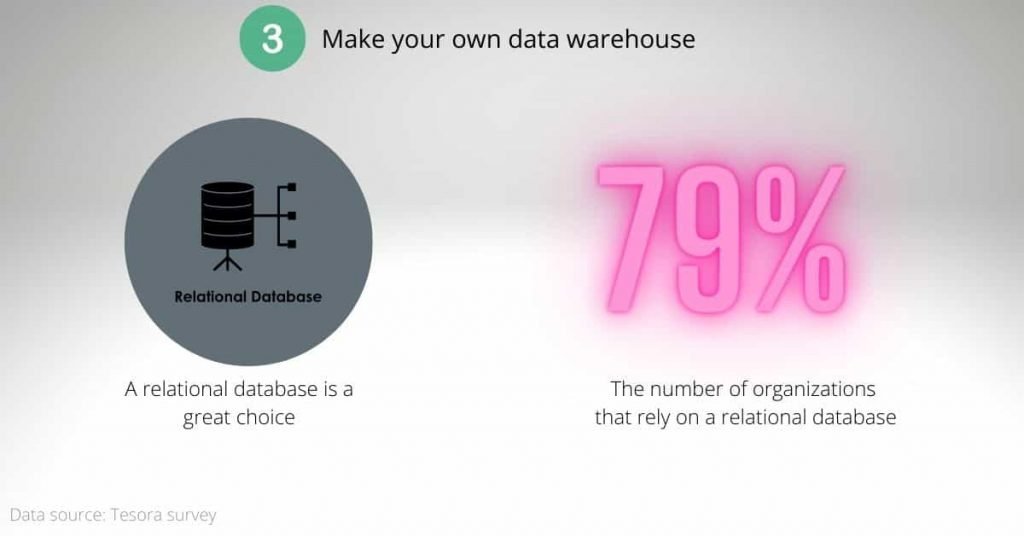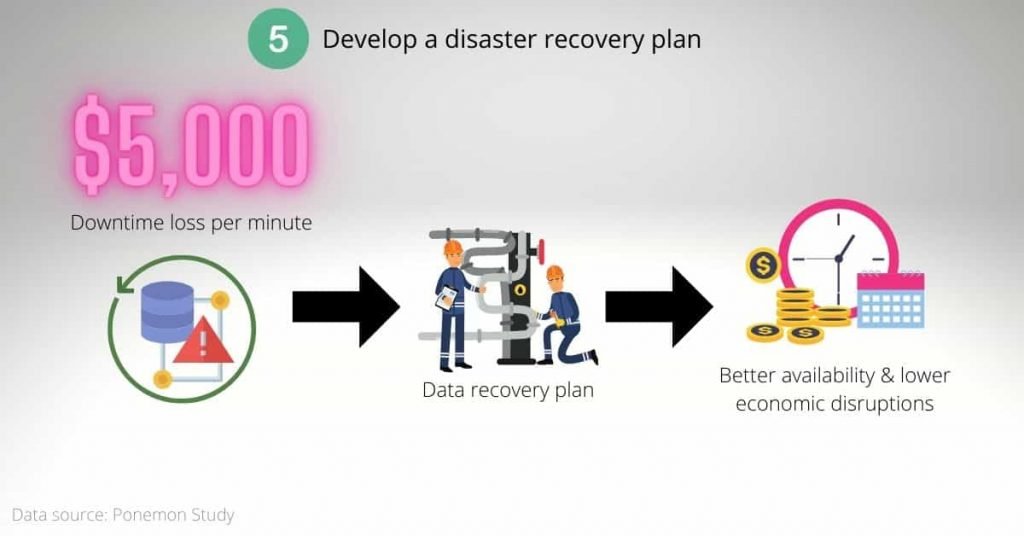Are you struggling to get a hold of sales reports?
Data is the backbone of your business.
Without a clear data structuring methodology, finding those important business documents you need for inventory and social marketing decisions will involve running around in lots of circles. Employees will spend a lot of productive time retrieving data at the expense of operational flow.
But that is only a tip of the many dark data vulnerabilities.
As data silos continue to ravage your legacy systems, cybercriminals will exploit loopholes to steal your customer’s personally identifiable information (PII). Tax and data compliance issues will be rampant as well.
In this article, I will be showing you how to build a reliable data pipeline for your small business to improve your productivity and data security.
Let’s get started.
1. Identify Data Sources and Legacy Systems
Do you know all of your business’s data sources?
It’s hard to build your data pipeline if you don’t have the full picture of where your data is coming from and the stops it makes along the way.
Without this information, it will be difficult to identify all the data streams that will feed your data pipeline. As a result, your pipeline won’t be reliable.
In addition to that, legacy systems stand in your way as well because they don’t support integration into new systems. You will consequently be unable to tap into today’s top digital transformation trends to improve customer experiences, productivity, and profitability.

The situation of legacy systems is out of hand in today’s business world.
According to a Camunda study, over 90% of IT decision-makers say legacy systems are hampering decision-making and digital transformation efforts.
So the first step will be to identify data sources and legacy systems.
Legacy systems here entail outdated computer software and hardware which no longer receive manufacturer support. That could be anything from your outdated SaaS solution to obsolete storage mechanisms like floppy disks, among others.
Moreover, you’ll also need to pick out data sources, both customer and employee-generated. On the customer’s front, you’re looking at submission forms and images of documentation among others.
From your insider’s perspective, data sources include sales reports, emails, and other business documents.
2. Structure and Clean Your Data
Unstructured data can be a huge thorn in the foot of your business.
Due to the lack of a clear structure, this data is hard to store, process, and manage, mostly because of incompatibility issues with many computer systems.
Despite that being the case, unstructured data is a problem plaguing many organizations today given that over 80% of enterprise data is unstructured.
In this state, it becomes hard for your business to set up a relational database for your data pipeline, which is desirable because such a database makes it easy for you to store and analyze data.
So you’ll need to put in place a permanent data structuring platform, and not a one time-fix solution because your business feeds on unstructured data from your customers and other sources every day.

One excellent long-term data structuring option is a content intelligence platform.
First, such software can scan your legacy systems to identify unstructured data such as your small business invoices, and other workflow files residing within your silos.
It can also digitize your content from various file formats including images, audio, and word documents, and convert this file into a single searchable format, namely PDF.
Above all, an intelligent document processing system can use machine learning and natural language processing to eliminate duplicates and classify data.
As an example, a UK bank was able to break down silos with content intelligence.
It gained access to over 3.6 million legacy client documents left inaccessible by system upgrades, enabling the bank to expand its data pipeline and safely channel sensitive information.
3. Build Your Own Data Warehouse
Your data warehouse refers to the storage location for your data.
With clean datasets to work with thanks to content intelligence, the next step on how to build a reliable data pipeline for your small business entails choosing a relational database.
So why is a relational database (RDB) preferred?
According to a Tesora survey, 79% of organizations today use a variation of the relational database, and for good reason.
A non-relational database is limited in comparison when it comes to simplicity, robustness, and flexibility.
One way to get a relational database for your business is to create one.

If you have the underlying SQL knowledge, you can build your own database. If not, then you should consider signing up for SQL classes to learn the ropes of how to create your RDB from scratch.
Traditionally, there are multiple relational database options to consider. Some popular examples include:
- MySQL
- Oracle Database
- IBM DB2
MySQL is an excellent option because of its ease of use, depth of important tools, and flexibility of data recovery.
As an example, Taxi giant Uber is using MySQL to better manage its ordering system.
This RBD has proved an excellent choice because previously the company was running into bugs on its old database. With MySQL, Uber has enjoyed great scalability and success.
4. Identify a Server for Your Database
With your database figured out, it’s time to consider hosting solutions.
How long have you been using your current server for?
If it’s anything over four years, then you might need a replacement in order to find a reliable home for your new database. This is because an IDC report finds that old severs increase your support costs by about 40% by the fourth year, a figure that goes up five times a year later.
What’s more, without upgrading your server infrastructure, your data pipeline will not be able to perform at peak performance.

Temperamental servers aren’t ideal for your small business, especially if your data transactions are growing at an alarming rate.
So how do you choose the right server?
First, you will need to figure out if you need a dedicated hosting solution.
If your workflow traffic isn’t that high and consequently your server capacity needs are fairly low as well, a shared server will do the work just fine.
On the other hand, if you’re anticipating rampant growth in the next few weeks, then a dedicated hosting solution is a good idea. That’s especially so if your workflow contains sensitive customer PII that you’d like to better safeguard as well.
5. Create a Disaster Recovery Plan
No matter how meticulously crafted, your data pipeline may fail at some point.
In that case, you’ll want to have contingency measures in place. Otherwise, you’ll have to contend with long periods of data downtime.
Data outages are tremendously costly, a Ponemon Institute study reveals.
For every single minute of data downtime, it is estimated that businesses lose $5,000 within that time.
The cost of repairs and recovery significantly contribute to this amount, but more importantly, the loss is also largely due to the economic consequences of business disruption. That includes lost business opportunities, customer churn, and reputational damages.

To better manage outages, you’ll need a data pipeline recovery plan.
The first step to that is creating a data management strategy to document operational procedures, inclusive of staff training, to prevent human error which is among the topmost causes of data downtime.
Other times the outage could be due to digital crime, usually a denial-of-service attack, which is why cyber security awareness for your small business is important.
Moreover, you should also have a disaster recovery plan that incorporates cloud content intelligence to ensure good backup. This way it’s easier to get your systems back up and running after an incident.
Conclusion
Is your data chaos running rampant?
Then get a hold of it today.
There’s no better time to learn how to build a reliable data pipeline for your small business and steer yourself out of the path of cyber risk and off-target marketing.
Remember, the longer you wait before taking action, the bigger your unstructured data problem gets. As a result, the more expensive it will be to build your own data pipeline when you eventually get to it.
Speaking of financing, you might want to consider a SmartBiz loan for your project.
If resources are a little strapped at the moment, SmartBiz will connect you to excellent low-rate lenders to jumpstart your business and get your project rolling.

![5 Innovative Applications of Artificial Intelligence in Manufacturing [2021]](https://geokongo.com/wp-content/uploads/2021/09/Applications-of-Artificial-Intelligence-in-Manufacturing-2021-1024x536.jpg)


